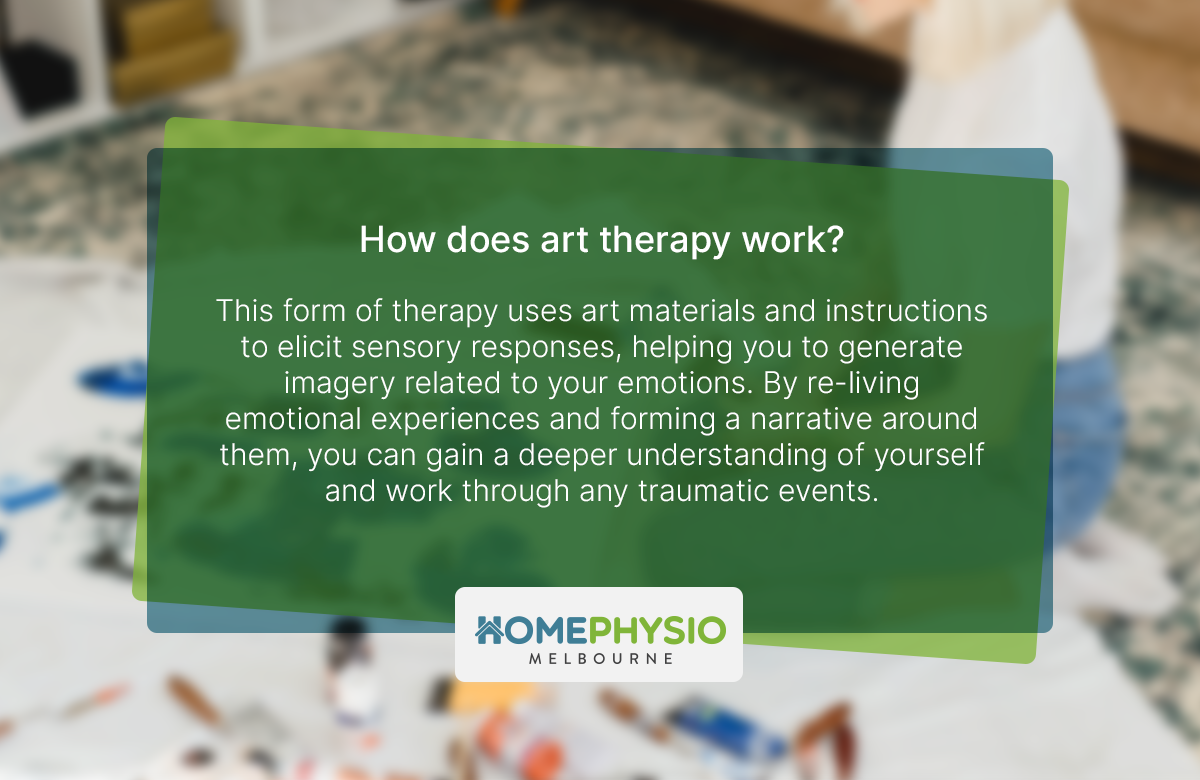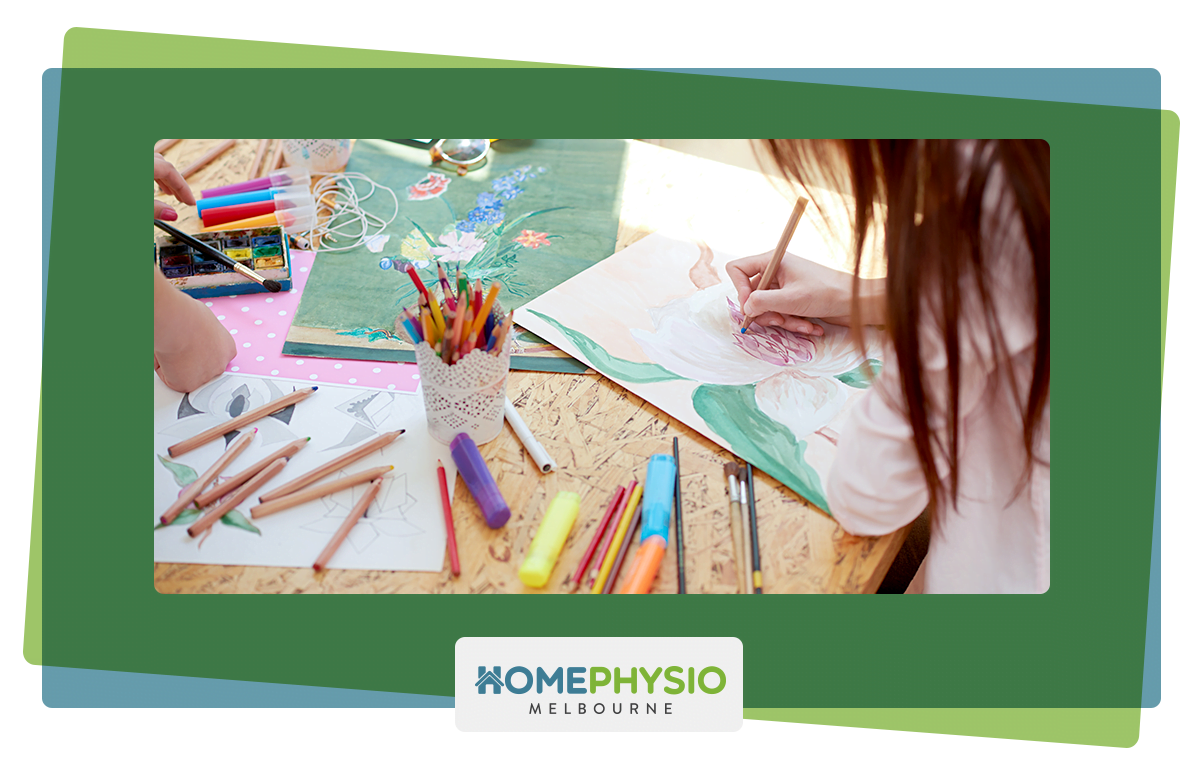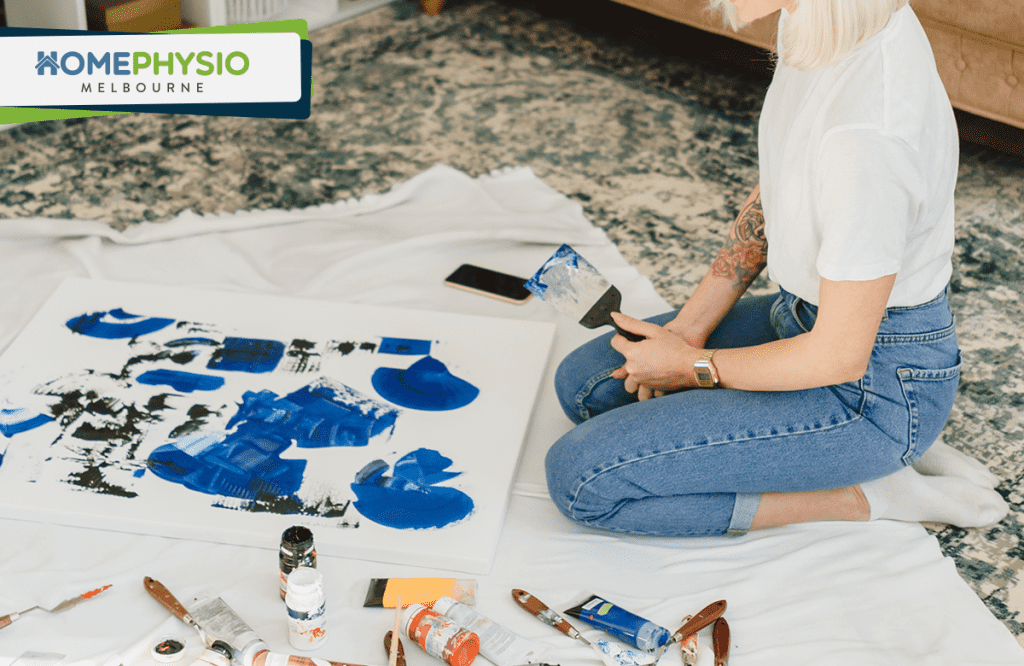The goal of art therapy is to use the creative process to assist people in exploring self-expression and, as a result, discover new ways to gain personal insight and develop healthy coping strategies.
Art is used to help people discover emotions, develop self-awareness, cope with stress, boost self-esteem, and practise social skills.
Patients may analyse their artwork and how it makes them feel as they create it. They can look for themes and conflicts in their art that may be affecting their thoughts, feelings, and behavioural patterns.
What is art therapy?
Art therapy is a type of psychotherapy in which art materials enable emotional expression. It has been used to treat mental health issues since the 1920s and is now commonly recognised as a powerful tool.
Art therapy patients create artwork with various media such as clay, paint, or pencils. The therapist then analyses these images to assist them in expressing their emotions. This enables the patient to gain insight into and accept their feelings.
Art therapy is practised in various settings, including educational, medical, rehabilitation, private practices and mental health clinics.
Art therapy is an effective treatment for phobias, depression, anxiety, post-traumatic stress disorder (PTSD), and other mental illnesses. According to research, it can alleviate symptoms sooner than medication alone.
What exactly does an art therapist do?
Visual art therapy is used by art therapists to improve physical, mental, and emotional well-being. They work with specific individuals and groups to create meaning through the art process, such as painting, rather than focusing on the end product.
People who cannot express their emotions verbally due to developmental, cognitive, or other conditions may benefit from art therapy.
An art therapist is a licensed professional who has received training in therapy and art to conduct these therapy sessions for people of all ages. Art therapy can be incorporated into one-on-one sessions, group therapy, and family or couples counselling.
How does art therapy work?
An art therapist employs art materials and instructions to elicit sensory responses and starts generating imagery that is directly related to emotions.
This process allows you to re-live emotional experiences that will enable you to organise your feelings and form a narrative around a traumatic event.
When this happens, words can emerge that allow for communication.
Furthermore, the art therapist‘s goal is to assist the patient in gaining personal insight, self-awareness, and new coping skills that promote an improved level of functioning and quality of life.

Types of art therapy
- Drawing
- Colouring
- Photography
- Collage
- Clay work
- Scribbling and doodling
- Sculpting
- Painting
- Painting with your fingers
Circumstances that benefit from art therapy
According to the Art Therapy Credentials Board, in addition to standard treatments, art therapy can address the following problems:
- Patients suffering from conditions such as depression, autism, and dementia.
- People suffering from other conditions, such as eating disorders and substance abuse problems.
- People suffering from serious health issues, such as traumatic brain injuries or cancer.
- Art therapy can help people in pain reduce their stress and anxiety.
According to practitioners, art therapy can also help people improve specific skills by:
- Increasing their awareness of themselves.
- An improved approach to conflict resolution.
- Improving social skills.
- Improving their ability to self-regulate.
- Stress management.
What are the benefits of art therapy?
- Share in a safe, nurturing environment.
- Express feelings that are difficult to put into words.
- Improve motor skills and coordination.
- Improve focus and healthy coping skills.
- Identify impediments to emotional expression and personal growth.
- Boost one’s self-esteem and confidence.
- Improve communication abilities.
- Utilise one‘s imagination and creativity.
What to expect during an art therapy session
Your art therapist will most likely ask you about your health history and your current concerns and goals during the first few sessions. They may also suggest a few themes to investigate further through sculpting, drawing, painting, or another medium.
Be prepared to answer questions about your artistic process. As the sessions progress, you will most likely be asked questions about your art and how it makes you feel.
For instance: What were you thinking while creating the artwork? Did you notice a difference in your mood from when you started to when you finished? Did the artwork elicit any memories?

Final thoughts
Art therapy is available for both individuals and groups. Patients are not required to have any prior art experience or expertise.
The symbolic significance of the output is more important than the aesthetic value. This therapy considers the act of creating art to be therapeutic in and of itself.
Art therapy can only be practised by someone who has received the necessary training, certification, and licence. Unqualified art therapists are unable to practise genuine art therapy.
Hub And Spoke Health is honoured to have Art Therapy on its list of services provided to NDIS Participants. Please book an appointment with us today!
Author
-

Hub & Spoke is a unique Allied Health service that delivers the latest in therapies and treatments to you both in-home or at work to make health care accessible to everyone.
View all posts
















